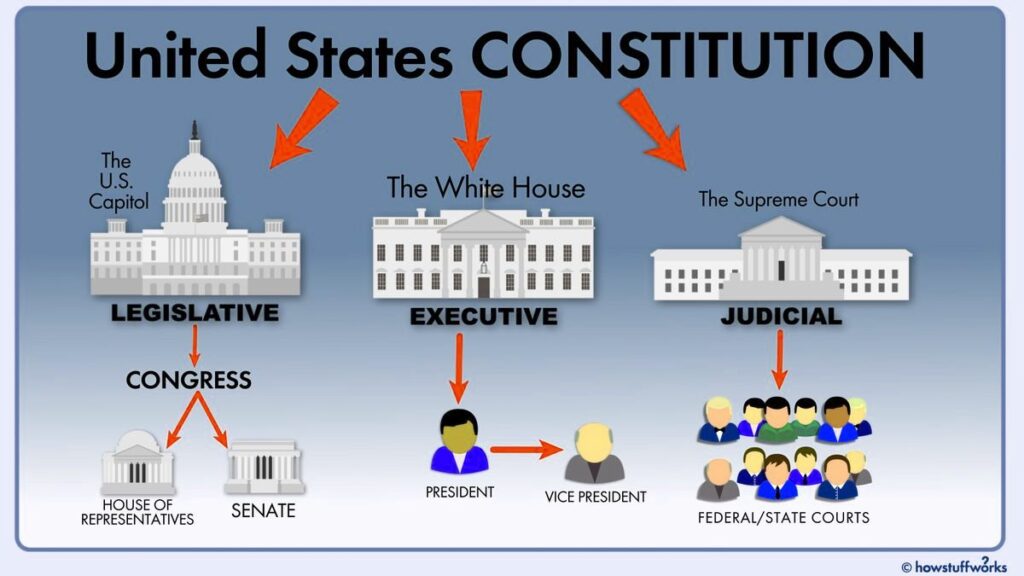TL;DR: Key Insights on the Expanded Negative Option Rule
- Negative option marketing allows companies to charge consumers automatically unless they opt out.
- The FTC has proposed an expanded rule to enhance consumer protections.
- Misrepresentation and exploitation of vulnerable populations are significant concerns.
- State regulations, particularly in California, vary widely and influence enforcement.
- Future trends suggest technological innovations will shape negative option marketing strategies.
Introduction to Negative Option Marketing
Negative option marketing is a sales strategy where consumers are automatically enrolled in a service or subscription unless they actively opt out. This approach has gained traction in various industries, including online services, subscription boxes, and digital content. While it can offer convenience to consumers, it also raises significant ethical and legal concerns regarding transparency and consent.
The practice often leads to confusion, as consumers may not fully understand the terms of service or the implications of their enrollment. This lack of clarity can result in unintended charges and dissatisfaction, prompting regulatory scrutiny. As the digital marketplace evolves, the need for clear guidelines and consumer protections becomes increasingly critical.
Understanding the Legal Framework
Overview of Relevant Legislation
Several key pieces of legislation govern negative option marketing practices. The Federal Trade Commission Act (FTC Act) prohibits unfair or deceptive acts or practices in commerce, which includes misleading negative option marketing. The Restore Online Shoppers’ Confidence Act (ROSCA) specifically addresses negative option plans, requiring clear disclosures and affirmative consent from consumers before enrollment.
Additionally, state laws, such as the California Consumer Privacy Act (CCPA), impose further restrictions on how companies can operate negative option marketing schemes. These laws aim to enhance consumer rights and ensure that individuals are fully informed about their subscriptions and the terms associated with them.
Key Regulatory Bodies Involved
The primary regulatory body overseeing negative option marketing is the Federal Trade Commission (FTC). The FTC is responsible for enforcing consumer protection laws and ensuring that businesses comply with regulations regarding negative option marketing. State attorneys general also play a crucial role in enforcing local laws and protecting consumers from deceptive practices.
Other organizations, such as the Federal Communications Commission (FCC), may also be involved when negative option marketing intersects with telecommunications services. The interplay between federal and state regulations creates a complex legal landscape for businesses operating in this space.
The Role of the FTC in Regulating Negative Options
FTC’s Authority and Responsibilities
The FTC has broad authority to regulate negative option marketing under the FTC Act. This includes the power to investigate deceptive practices, enforce compliance, and impose penalties on companies that violate consumer protection laws. The FTC’s role is critical in ensuring that consumers are not misled or exploited by negative option marketing schemes.
In recent years, the FTC has increased its focus on negative option marketing, recognizing the potential for consumer harm. The agency has issued guidelines and proposed rules aimed at clarifying the requirements for businesses and enhancing consumer protections.
Recent Actions and Proposals
In 2023, the FTC proposed an expanded negative option rule that seeks to strengthen protections for consumers. This proposal includes stricter requirements for disclosures, emphasizing the need for clear and conspicuous information about subscription terms, cancellation policies, and any associated fees. The FTC aims to address common issues related to misrepresentation and to ensure that consumers have a genuine opportunity to opt out of services.
The agency has also conducted workshops and public forums to gather input from stakeholders, including consumer advocacy groups and industry representatives. These efforts reflect the FTC’s commitment to creating a regulatory framework that balances consumer protection with the interests of businesses.
Consumer Protection Concerns
Misrepresentation Issues
One of the most pressing concerns regarding negative option marketing is the potential for misrepresentation. Companies may use ambiguous language or deceptive practices to enroll consumers without their explicit consent. This can lead to situations where consumers are unaware of their subscriptions until they notice unexpected charges on their credit cards.
Misrepresentation can take various forms, including misleading advertisements, unclear terms of service, and failure to provide adequate cancellation options. These practices not only violate consumer trust but also raise legal questions about the validity of the contracts formed through negative option marketing.
Impact on Vulnerable Populations
Vulnerable populations, including the elderly and low-income individuals, are particularly susceptible to the pitfalls of negative option marketing. These groups may lack the resources or knowledge to navigate complex subscription terms, making them prime targets for exploitation.
Research indicates that individuals in these demographics are more likely to face financial strain due to unexpected charges from negative option plans. This highlights the urgent need for regulatory measures that protect these consumers and ensure that they are not unfairly targeted by aggressive marketing tactics.
Case Studies of Negative Option Marketing
Successful Campaigns
Several companies have successfully implemented negative option marketing strategies that comply with legal requirements and prioritize consumer transparency. For instance, subscription box services often provide clear information about their offerings, cancellation policies, and billing practices. These companies typically emphasize customer satisfaction and actively encourage feedback to improve their services.
Successful campaigns often include robust customer support systems that allow consumers to easily manage their subscriptions. By fostering trust and transparency, these businesses can maintain a loyal customer base while adhering to regulatory standards.
Notable Legal Challenges
Conversely, numerous companies have faced legal challenges due to their negative option marketing practices. High-profile cases have emerged where businesses were accused of misleading consumers about their subscription terms or failing to provide adequate cancellation options.
For example, a notable case involved a major online retailer that was sued for automatically enrolling customers in a subscription service without their explicit consent. The court ruled in favor of the plaintiffs, highlighting the importance of clear communication and consumer consent in negative option marketing.
Industry Perspectives on Regulation
Views from Direct Marketing Companies
Direct marketing companies often express concerns about the regulatory landscape surrounding negative option marketing. While many support consumer protection efforts, they argue that overly stringent regulations could stifle innovation and limit their ability to offer competitive services.
Industry representatives advocate for a balanced approach that protects consumers while allowing businesses to thrive. They emphasize the importance of clear guidelines that enable companies to implement negative option marketing responsibly and ethically.
Reactions from Consumer Advocacy Groups
Consumer advocacy groups generally welcome increased scrutiny of negative option marketing practices. They argue that stronger regulations are necessary to protect consumers from deceptive practices and ensure that individuals have a clear understanding of their subscriptions.
These organizations often push for more transparency in marketing communications and advocate for policies that empower consumers to make informed decisions. Their efforts play a crucial role in shaping public discourse around negative option marketing and influencing regulatory developments.
State-Level Regulations and Variations
California’s Approach
California has emerged as a leader in regulating negative option marketing, implementing stringent laws to protect consumers. The California Consumer Privacy Act (CCPA) and other state-specific regulations require businesses to provide clear disclosures about subscription terms and cancellation policies.
California’s approach emphasizes consumer rights and transparency, setting a precedent for other states to follow. The state’s attorney general actively enforces these regulations, holding companies accountable for deceptive practices.
Comparative Analysis with Other States
While California has taken significant steps to regulate negative option marketing, other states have adopted varying approaches. Some states have implemented similar consumer protection laws, while others have less stringent regulations. This patchwork of state laws creates challenges for businesses operating across state lines, as they must navigate differing compliance requirements.
A comparative analysis reveals that states with robust consumer protection laws tend to have lower rates of consumer complaints related to negative option marketing. This underscores the importance of strong regulatory frameworks in safeguarding consumer interests.
Future Trends in Negative Option Marketing
Technological Innovations
Technological advancements are poised to reshape the landscape of negative option marketing. Companies are increasingly leveraging data analytics and artificial intelligence to enhance their marketing strategies and improve customer experiences.
For instance, businesses can use data to personalize offers and tailor subscription services to individual preferences, potentially increasing customer satisfaction. However, these innovations also raise ethical concerns regarding data privacy and consumer consent, necessitating careful consideration of regulatory implications.
Shifts in Consumer Behavior
As consumers become more aware of negative option marketing practices, their behaviors are evolving. Many individuals are now more cautious about subscription services, often conducting thorough research before enrolling. This shift in consumer behavior presents both challenges and opportunities for businesses.
Companies must adapt their marketing strategies to address these changing consumer attitudes, emphasizing transparency and ethical practices. By prioritizing consumer trust, businesses can foster long-term relationships and mitigate the risks associated with negative option marketing.
Challenges in Enforcement
Identifying Violations
One of the primary challenges in enforcing regulations related to negative option marketing is identifying violations. Many deceptive practices are subtle and may not be immediately apparent to consumers or regulators.
Regulatory bodies must develop effective strategies for monitoring compliance and investigating complaints. This may involve increased collaboration between federal and state agencies to share information and resources.
Resource Limitations for Regulatory Bodies
Regulatory agencies often face resource limitations that hinder their ability to effectively enforce negative option marketing regulations. Budget constraints and staffing shortages can impede investigations and limit the scope of enforcement actions.
To address these challenges, agencies may need to prioritize their efforts and focus on high-impact cases that pose significant risks to consumers. Additionally, fostering partnerships with consumer advocacy groups can enhance enforcement capabilities and promote accountability within the industry.
Conclusion and Recommendations
In conclusion, the landscape of negative option marketing is complex and evolving. As regulatory bodies, businesses, and consumers navigate this terrain, it is essential to prioritize transparency, ethical practices, and consumer protection.
The Importance of Consumer Protection
Strengthening consumer protections is paramount in ensuring that individuals are not misled or exploited by negative option marketing practices. Regulatory agencies must continue to refine their approaches and adapt to the changing marketplace to safeguard consumer interests.
Future Implications for Regulatory Frameworks
Looking ahead, it is crucial for regulatory frameworks to evolve in response to technological advancements and shifting consumer behaviors. By fostering collaboration between industry stakeholders and regulatory bodies, we can create a balanced environment that promotes innovation while protecting consumers from deceptive practices.
Conclusion on Negative Option Marketing Regulations
The ongoing dialogue surrounding negative option marketing regulations highlights the need for a comprehensive approach that addresses consumer concerns while allowing businesses to thrive. As we move forward, a commitment to transparency, accountability, and consumer empowerment will be essential in shaping the future of negative option marketing.

